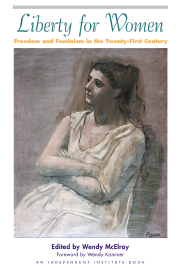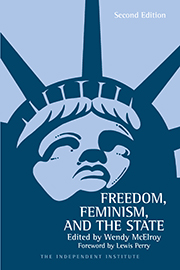“Not a plumber fired a salute or hung out a flag. Not a governor proclaimed a day of prayer,” wrote H.L. Mencken on December 28, 1917, in the New York Evening Mail. The occasion for the iconoclastic journalist’s lament was “A Neglected Anniversary,” so titled because, as Mencken declared, America had neglected to celebrate the 75th anniversary of the invention of the modern bathtub, which had occurred on December 20, 1842, in Cincinnati, Ohio.
He proceeded to offer a history of the bathtub in the United States. President Millard Fillmore had installed the first one in the White House in 1851. This had been a brave act on Fillmore’s part, since the health risks of using a bathtub had been the subject of great controversy within the medical establishment. Indeed, Mencken observed, “Boston early in 1845 made bathing unlawful except upon medical advice, but the ordinance was never enforced and in 1862, it was repealed.”
“A Neglected Anniversary” was the direct result of the anti-German propaganda that dominated the newspapers in the years before and during America’s involvement in World War I. Mencken was an established and respected newspaperman. He had started his career as a reporter for the Baltimore Morning Herald in 1899, becoming city editor in 1904. In 1906 he began his long association with the Baltimore Sun. Yet during America’s anti-German period, he could not get material on World War I published because of his pro-German views, which sprang from a love of the culture rather than from its politics. Mencken was enraged by the popular portrayal of Germans as “barbarous Huns” who committed atrocities such as the widely reported bayoneting of Belgian babies. (Although this accusation had been absolutely accepted by the American people, it was later proven to be pure Allied propaganda.)
Mencken attempted to infuse some real-world perspective on the war into American newspapers. Near the end of 1916 he traveled as a reporter to the eastern front to cover the hostilities, but the breakdown of diplomatic relations between Germany and America forced him to return. At home he discovered to his horror that most of his dispatches had not been published. Edward A. Martin writes in H.L. Mencken and the Debunkers, “It was 1917; Mencken, passionately pro-German, felt muzzled by the excesses of patriotism that dominated the attitude of Americans. The ‘Free Lance’ column [Mencken’s daily column in the Evening Sun] had been a casualty, in 1915, of his unpopular views of the war. The war and all of its ramifications were excluded from his writing until after 1919.”
Thus, Mencken-a political animal to the core-turned to nonpolitical writing in order to publish. A Book of Prefaces, a collection of literary criticism, appeared in 1917. His book on the position of women in society, In Defense of Women, was issued in 1918. And the first edition of Mencken’s magnum opus, The American Language, emerged in 1919. He also wrote for the literary magazine he co-edited with George Nathan, The Smart Set.
But Mencken was far from sanguine about having his political views suppressed. He complained to Ellery Sedgwick, editor of The Atlantic Monthly, whose pages were also closed to him: “It is, in fact, out of the question for a man of my training and sympathies to avoid the war. . . . How can I preach upon the dangerous hysterias of democracy without citing the super-obvious spy scare with its typical putting of public credulity to political and personal uses?”
Seeking an Outlet
His restless frustration found vent in “A Neglected Anniversary.” Like so much of Mencken’s writing, the article was not quite what it seemed to be on the surface. It had levels of meaning. “A Neglected Anniversary” was a satire destined to become a classic of this genre of literature in much the same manner as Jonathan Swift’s “A Modest Proposal,” which satirized English policy in Ireland. In the article, Mencken spoke in an eloquent tone of mock reason, which was supported by bogus citations and manufactured statistics.
In short, his history of the bathtub was an utter hoax set within the framework of historical fact.
The modern bathtub had not been invented in Cincinnati. Fillmore had not introduced it into the White House. The anti-bathtub laws Mencken cited were, to use one of his favorite words, “buncombe.”
Calling the hoax “an amazing mixture of obvious fact and hard to refute fiction,” the author of An Un-Neglected History, P. J. Wingate, observed, “The story said that Millard Fillmore became President in 1850. True. It was easy to look that up. Also it said, obliquely, that Gen. Charles M. Conrad was Secretary of War under Fillmore. True again.” As for the “hard to refute fiction,” Wingate continued: “Mencken set a couple of very carefully hidden traps. He quoted from The Western Medical Repository of April 23, 1843, and the Christian Register of July 17, 1857. No editor or scholar in the land could find these imaginary journals but they had plausible names.” Moreover, Mencken’s citation of specific dates lent credibility to the quotations so that researchers might well assume that their own archives were incomplete.
The journalist’s purpose was not “good clean fun,” though it is certain Mencken enjoyed the hoax. “A Neglected Anniversary” was an act of merry contempt directed at journalists who blithely reported fiction as fact and at readers who were so gullible as to believe blatantly false reports without question. As he later wrote, “One recalls the gaudy days of 1914–1918. How much that was then devoured by the newspaper readers of the world was actually true? Probably not one per cent. Ever since the war ended learned and laborious men have been at work examining and exposing its fictions.”
Through his hoax, Mencken demonstrated to himself and to selected friends that the American public would believe any absurdity, as long as it appealed to their imagination or emotions. They would even believe a nonexistent inventor in Cincinnati, Adam Thompson, had hired blacks to haul water “from the Ohio river in buckets” to his bathtub because the city then lacked running water.
Keeping Quiet
Content with his private joke, Mencken remained silent about the hoax until a follow-up article, “Melancholy Reflections,” appeared in the Chicago Tribune on May 23, 1926, some eight years later. This was Mencken’s confession. It was also an appeal for reason to the American public.
His hoax was a joke gone bad. “A Neglected Anniversary” had been printed and reprinted hundreds of times in the intervening years. Mencken had been receiving letters of corroboration from some readers and requests for more details from others. His history of the bathtub had been cited repeatedly by other writers and was starting to find its way into reference works. As Mencken noted in “Melancholy Reflections,” his “facts” “began to be used by chiropractors and other such quacks as evidence of the stupidity of medical men. They began to be cited by medical men as proof of the progress of public hygiene.” And, because Fillmore’s presidency had been so uneventful, on the date of his birthday calendars often included the only interesting tidbit of information they could find: Fillmore had introduced the bathtub into the White House. (Even the later scholarly disclosure that Andrew Jackson had a bathtub installed there in 1834—years before Mencken claimed it was even invented—did not diminish America’s conviction that Fillmore was responsible.)
Mencken speculated on the probable response to his confession, “The Cincinnati boomers, who have made much of the boast that the bathtub industry, now running to $200,000,000 a year, was started in their town, will charge me with spreading lies against them. The chiropractors will damn me for blowing up their ammunition. The medical gents, having swallowed my quackery, will denounce me as a quack for exposing them.” He wondered whether disclosing the truth about the bathtub would lead to a renewed cry for his deportation to Russia as a Bolshevik.
One can only speculate on whether the actual response to “Melancholy Reflections” surprised Mencken, who was a practiced cynic by then. Many people believed that his confession, and not the original article, was the hoax. Mencken felt impelled to pen a second follow-up appeal, titled “Hymn to the Truth.” Writing in the Chicago Tribune of July 25, 1926, he commented, “The Herald printed my article [“Melancholy Reflections”] on page 7 of its editorial section . . . with a two column cartoon labeled satirically, ‘The American public will swallow anything.’ And then on June 13, three weeks later, in the same editorial section but promoted to page 1, this same Herald reprinted my 10 year old fake-soberly and as a piece of news!”
Mencken’s history of the American bathtub had been so graceful and charmingly constructed that people simply wished to believe it. Since then, curious researchers have thoroughly discredited Mencken’s bathtub “facts.” Biographies of Mencken feature the hoax he had played so well that even he could not debunk it. (All the bathtub pieces and more are compiled in The Bathtub Hoax and Other Blasts and Bravos, edited by Robert McHugh.) Yet references to Fillmore’s first bathtub still can be found. That piece of fiction has even made it into the Age of the Internet. The Internet Public Library’s page on Fillmore, part of its series on presidents, lists under “Points of Interest” the following: “The White House’s first library, bathtub and kitchen stove were installed by the Fillmores.” (See http://www.ipl.org/ref/POTUS/mfillmore.html.)
It is easy to laugh and lose sight of the motive behind “A Neglected Anniversary.” Mencken wished to demonstrate the dramatic inaccuracies of many newspaper accounts, which are too often swallowed whole by uncritical readers. This phenomenon is especially prevalent in periods of war, when great efforts are made to stir the public’s emotions so that it unquestioningly supports the government’s policies. When reading accounts of war, it is valuable to consider Mencken’s estimate that “probably not one per cent” of it is true.
The Bathtub, Mencken, and War
This article is reprinted with permission from The Freeman, August 1999. © Copyright 1999, the Foundation for Economic Education.
Wendy McElroy is a Research Fellow at the Independent Institute.
Civil Liberties and Human RightsDefense and Foreign PolicyEconomistsEconomyLaw and LibertyPhilosophy and Religion
Comments
Before posting, please read our Comment Policy.









